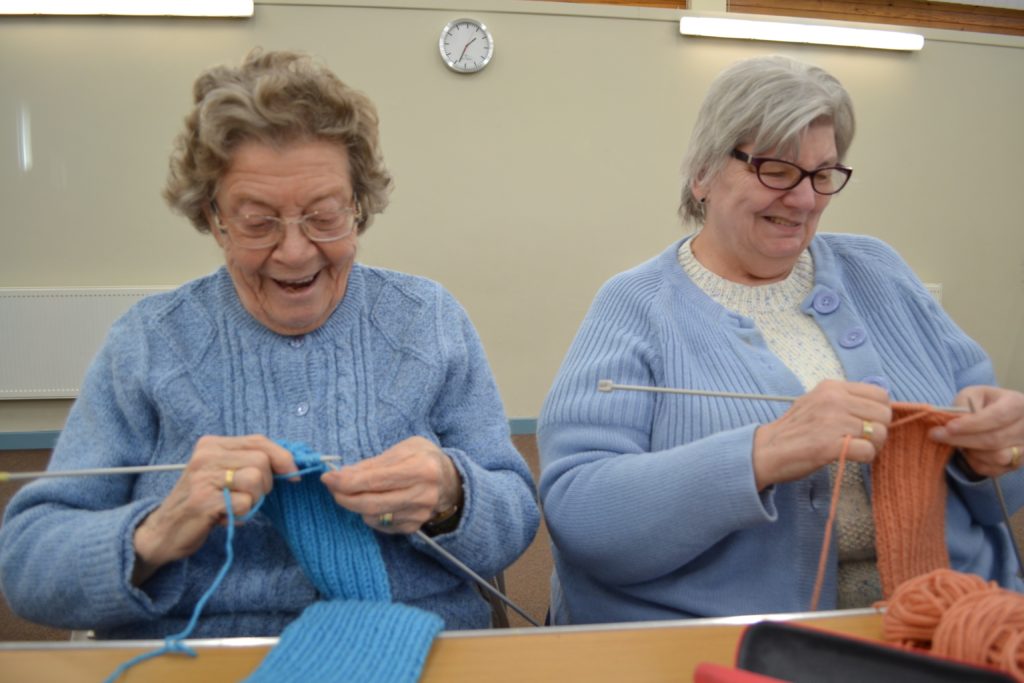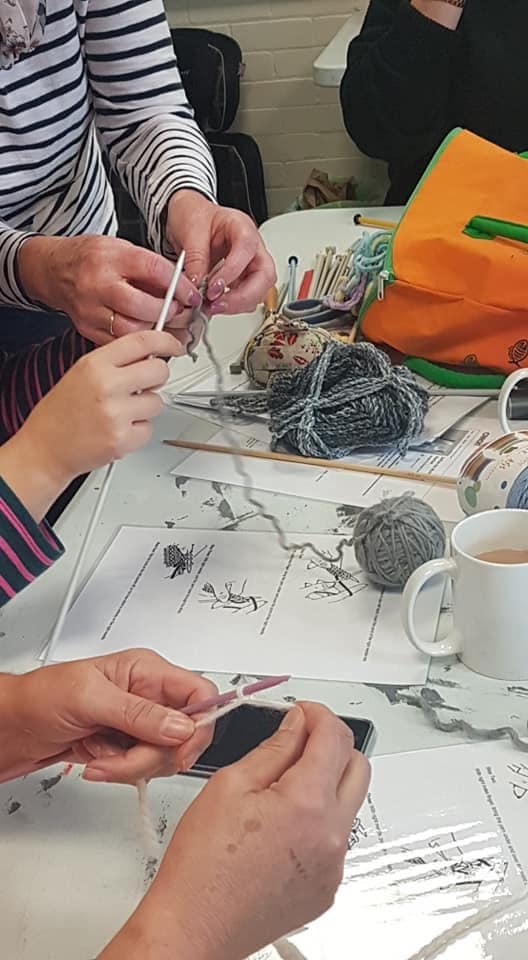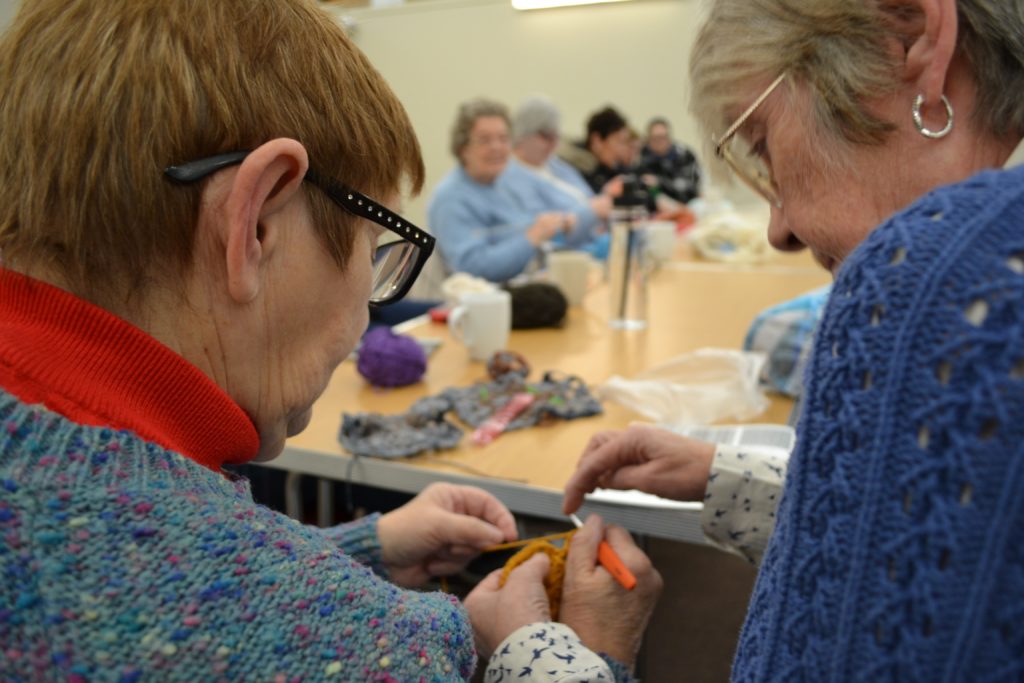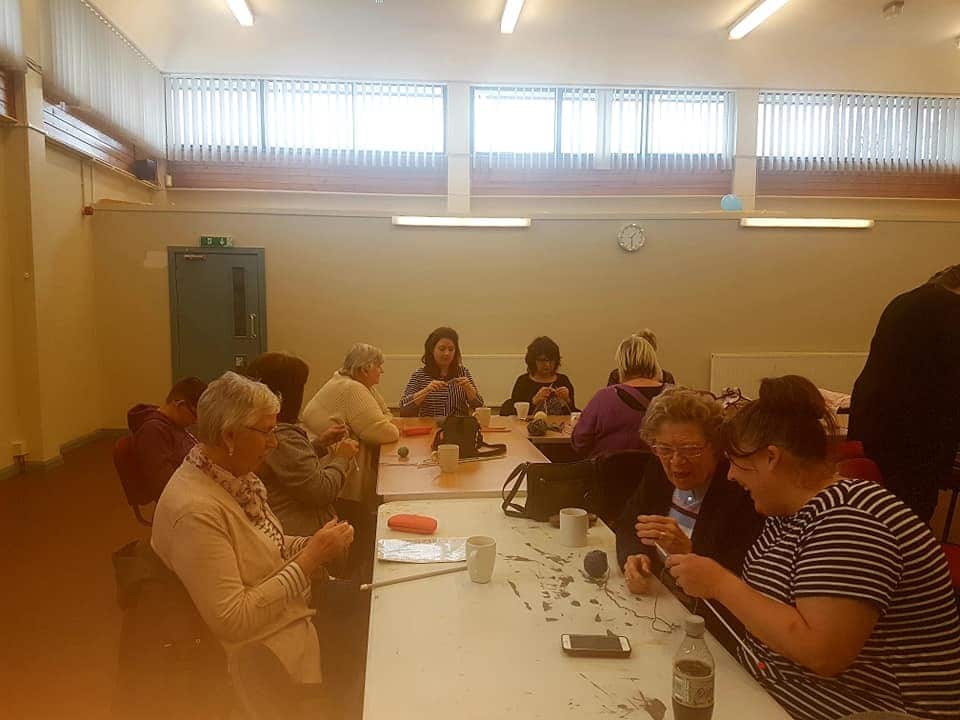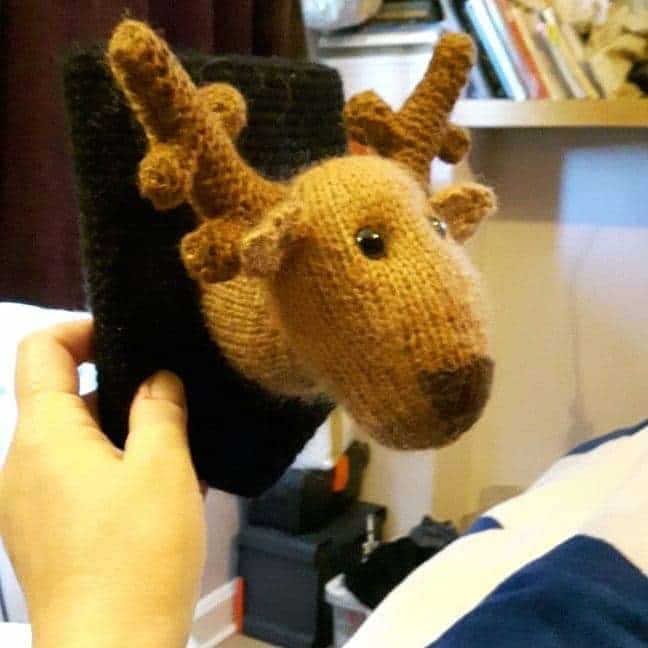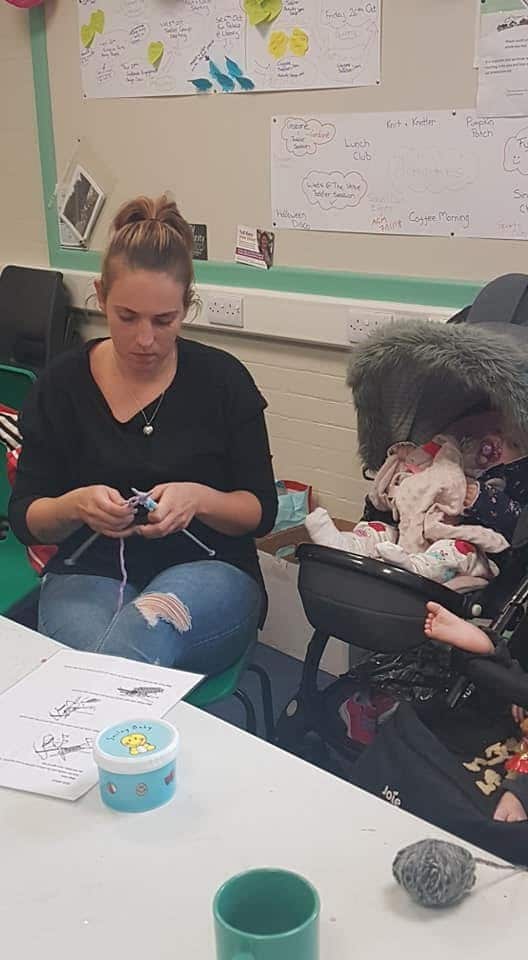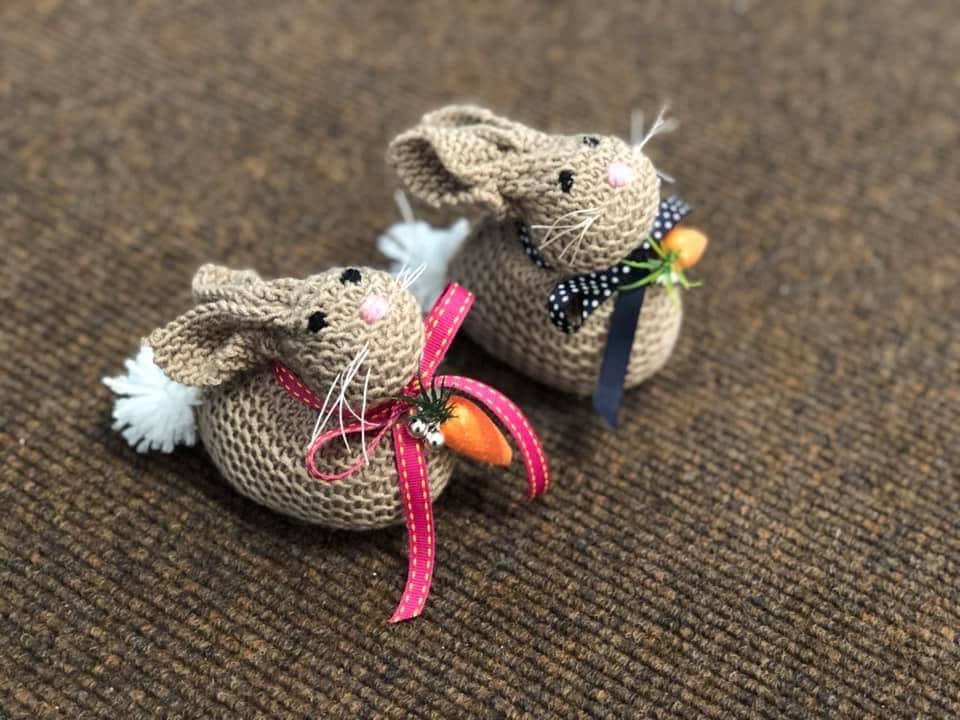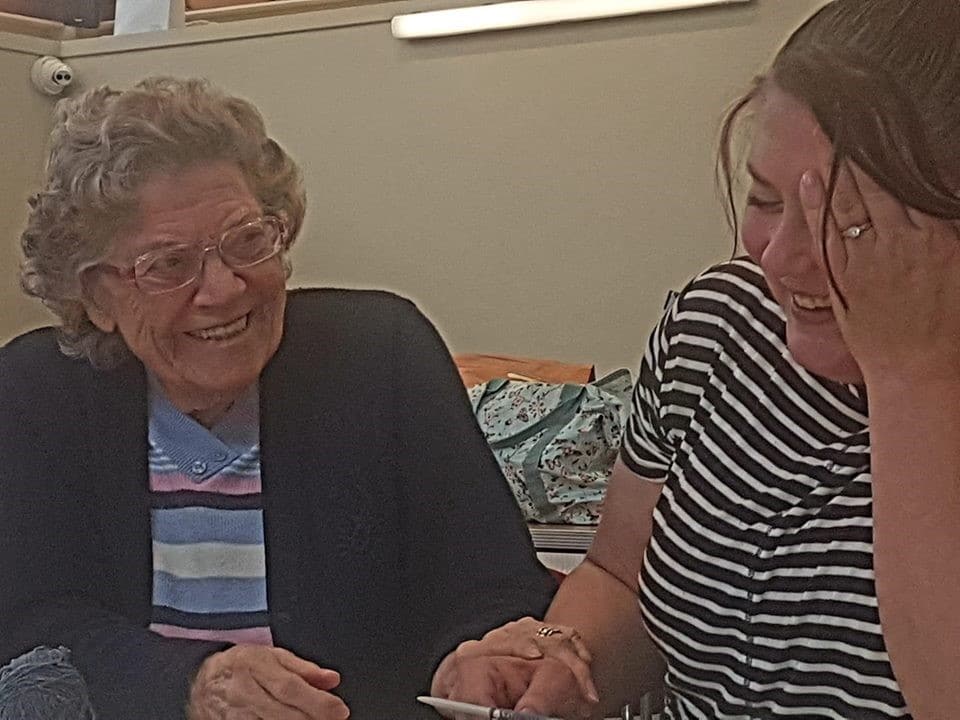In a nutshell
Who are you?
Katy Sneyd, Community Engagement Officer, Rudheath and Whitton Together.
What did you do?
Started a knit and natter group.
Why?
To tackle social isolation.
What’s the benefit?
Learning and sharing skills amongst an intergenerational group.
Biggest fear?
That nobody would turn up.
Planning and materials
I organised for Big Local to put adverts around the estate saying they would like to hear from people with new ideas. Kathryn Brown got in touch saying she was lonely and wanted to teach people knitting. She wanted to meet other people and pass her skills on. She suggested starting a knit and natter group and I was persuaded because Kathryn was so passionate. It’s like that with all the groups. The people who are really passionate run them brilliantly for other people. The journey they are on themselves is the biggest reward.
Big Local provides a grant to give everyone some wool and their first set of needles. This is an initial investment to encourage people to start, once they’ve started and want to do their own thing, they bring their own wool in.
Initially, Kathryn started by contacting Freecycle to get some knitting needles and wool and Big Local provided £100 of wool and she printed out descriptions of how to knit.
We are now asking, “what is the future plan?” We ask people to contribute a very small amount of money so we can plan for when the Big Local isn’t here. We also make sure this group and all others network with each other and connect to others in the community.
Generate publicity
You need a lot of publicity in every shape and form, particularly social media. We put posters on the bus stops and community noticeboards and we also created pamphlets so people could take and share them.
We have a Facebook site for the town and posted the notice on that – that brought the most people initially and continues to bring more.
Governance
There are a few things you must have in place before you can start a group like this, so we had to make sure someone had first aid training, that risk assessments were completed, and DBS checks done.
Many people want to organise groups, but don’t know how to do that side of it, so we provide support for those areas. We also help them to think about how they might get funding from different sources.
The meetings
At our first meeting, ten people turned up that couldn’t knit. We now get between four and twenty people turning up and it’s just as valuable if it’s four.
We increased our meetings by an hour because people asked for it to be longer. I set out the tables and Kathryn puts out the needles, wool and the patterns off the internet.
Learning starts off with scarves and the latest thing people knit is a square and then turn it into a bunny rabbit. We encourage people to learn themselves and then teach. I try to give them something every week to inspire them.
Some people come who can already knit and just want the company.
We have a whole range of people that come, from older ladies who take a lead in the teaching to young mums who bring their babies with them.
The feedback we get is that other knitting groups that run in the town are really expensive and if you’re a single mum or on benefits you can’t afford £5 or £6 a week to do that, so this is a good alternative.
We hear that somebody might go to a singing group or another might go to an over 65 group, but the knitting group seems to bring everyone together. The youngest person we have is 13 – she comes as part of her home-schooling for education and crafting. Come the school holidays people bring their children and grandchildren. Our oldest attendee is 87.
The outcome
Knit and natter started to help other people who were lonely and couldn’t connect and all the people who have learned to knit are now teaching others which is brilliant.
Early on, we realised that people found it difficult to remember each other’s names and as the point was to connect, we thought we’d make it easier by introducing name badges, which have been a big help.
We’ve also made it a drop-in, so you can turn up at any time and that makes sure people aren’t put off if they can’t make the full-time slot.
When we started, we really didn’t expect to draw the range of ages that we have, so that’s been a nice surprise. Our next focus is the fete coming up where the knit and natter group have their own tent to teach more people to knit.

